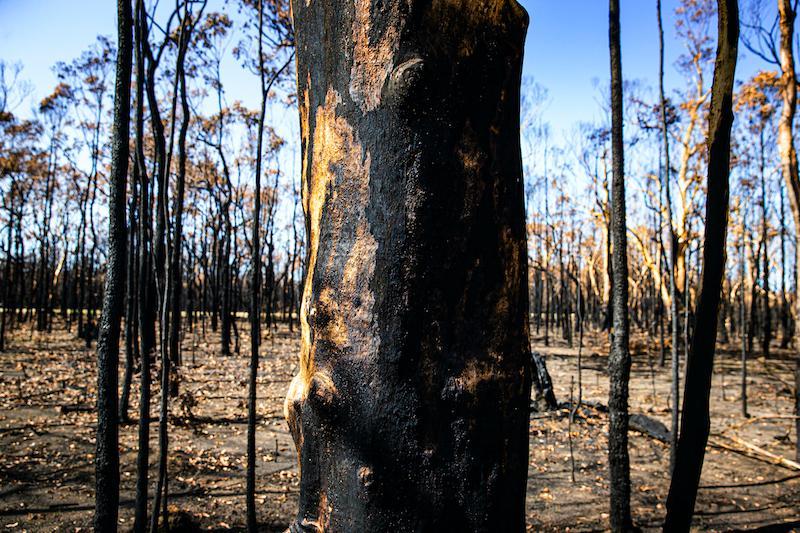April 22, 2020
Good mobile communication networks and services are vital
3G mobile networks need to be enhanced with extra towers to ensure dependable, good communications during emergencies.
This is a copy of a submission made to the NSW Bushfire Inquiry by University of Wollongong Honorary Professor Rodney Weber and Joanne Chapman.
Key point
The 3G mobile networks need to be enhanced with extra towers to ensure dependable, good communications during emergencies, particularly in regional areas where the major telecommunication companies are unlikely to widely roll out 4G (or 5G) services in the foreseeable future.
Explanatory details
During the recent massive bushfires many regional areas experienced prolonged periods without telephone, internet or television services. Even available radio services were, at times, reduced and severely limited. For example at our address in Surf Beach near Batemans Bay we experienced eleven days without electricity, so nbn services and television were unavailable, and nearby mobile phone towers were affected by bushfires, so mobile and internet services were also unavailable. During this difficult time the only information source for people living in their homes (as best they could) was radio. However, even this was only available for residents, visitors and tourists who had access to an older style battery operated radio, and only if they had sufficient spare batteries, and were lucky with reception.
Furthermore, much of the information given on the radio referred listeners to help lines or websites. While this is understandable, it was impossible to call these help lines or go to the web addresses unless one was able to travel to an area where services had been restored, or to a bushfire emergency evacuation centre. Additionally, one had to be able to keep mobile devices charged in an environment with no mains electricity. Fuel services were also limited, making residents wary of driving unless absolutely necessary; those residents without a vehicle could not call a taxi, and the bus services were understandably suspended. All of this meant that quality, up-to-date, locally relevant information was extremely difficult to obtain. At the same time the radio services were warning of further bushfire concerns, possible severe weather and water supply concerns in some areas. Without mobile phone and internet services, none of the details of the alerts could be checked, which was very concerning and frustrating.
Over the years the government of Australia has mandated the shutting down of the CDMA and 2G networks. It has now flagged that in 4 to 5 years the 3G mobile network will also be shutdown. The recent massive bushfires have highlighted that the current mobile phone and internet services are insufficient and unable to cope in a crisis.
Hence, we would urge governments at all levels to examine ways of properly servicing regional areas with reliable communication, particularly mobile phone and internet. The most obvious way to do this is to ensure good 3G coverage across all regional areas: this may require extra, and even duplicate 3G towers in some cases, but it is essential to good and reliable communication services.
4G services are indeed preferable, however, the higher frequencies mean shorter wavelengths, and this in turn necessitates many more 4G towers at significantly closer spacing than the 3G towers. In regional areas such as the Eurobodalla, Bega Valley, Shoalhaven and Queanbeyan-Palerang there are enormous swathes of land where mobile phone companies are unlikely to ever be prepared to deploy sufficient towers for a decent 4G service. Note that topography can also have an impact on being able to access the mobile services.
5G, while in principle even better in terms of speed and latency, requires even more towers than the 4G network.
Hence, we urge governments at all levels to work together and to mandate good and reliable communication infrastructure across regional Australia, possibly best achieved by retaining the 3G network and even enhancing or expanding it with more 3G towers.
Insist crucial websites are available in less ‘data hungry’ formats.
We would also recommend that state and federal governments commission an independent review of the density and number of 3G towers required (and possibly 4G towers as well), including an approximate cost, noting that there are three main networks.
Key point
The 3G mobile networks need to be enhanced with extra towers to ensure dependable, good communications during emergencies, particularly in regional areas where the major telecommunication companies are unlikely to widely roll out 4G (or 5G) services in the foreseeable future.
Rodney O. Weber B.Sc. (Melb.) Ph.D. (Tas.) Honorary Professor, University of Wollongong
Joanne S. Chapman B.Sc. (Lancs.) Ph.D. (Lancs.)
